| Lima | Ollantaytambo and Inca Rail | Machu Picchu | Cusco |
We got off the train in Ollantaytambo and got into a car we had arranged for the rest of the trip to Cusco. You can’t yet get the train all the way into Cusco itself and the tickets weren’t cheap to begin with so splitting the cost of a car and driver among four of us seemed the better solution. The route took us up over some of the highest areas in Peru, passing other Incan ruins, small towns, salt mines, and seemingly endless sweeping views that I never managed to capture with a camera.
Cusco is a large town, or small city, high in the Andes – so high you should’ve started taking Diamox before you arrived to stave off a good chance of suffering from altitude sickness. The town square is lined by charming Spanish Colonial buildings, many of which house modern businesses that seem out of place. Paddy’s claims to be the world’s highest Irish pub. Between the cathedral and another church is a Starbucks. Massage parlors, cell phone shops, scores of restaurants and bars – Cusco may have ancient roots but the town is no museum.
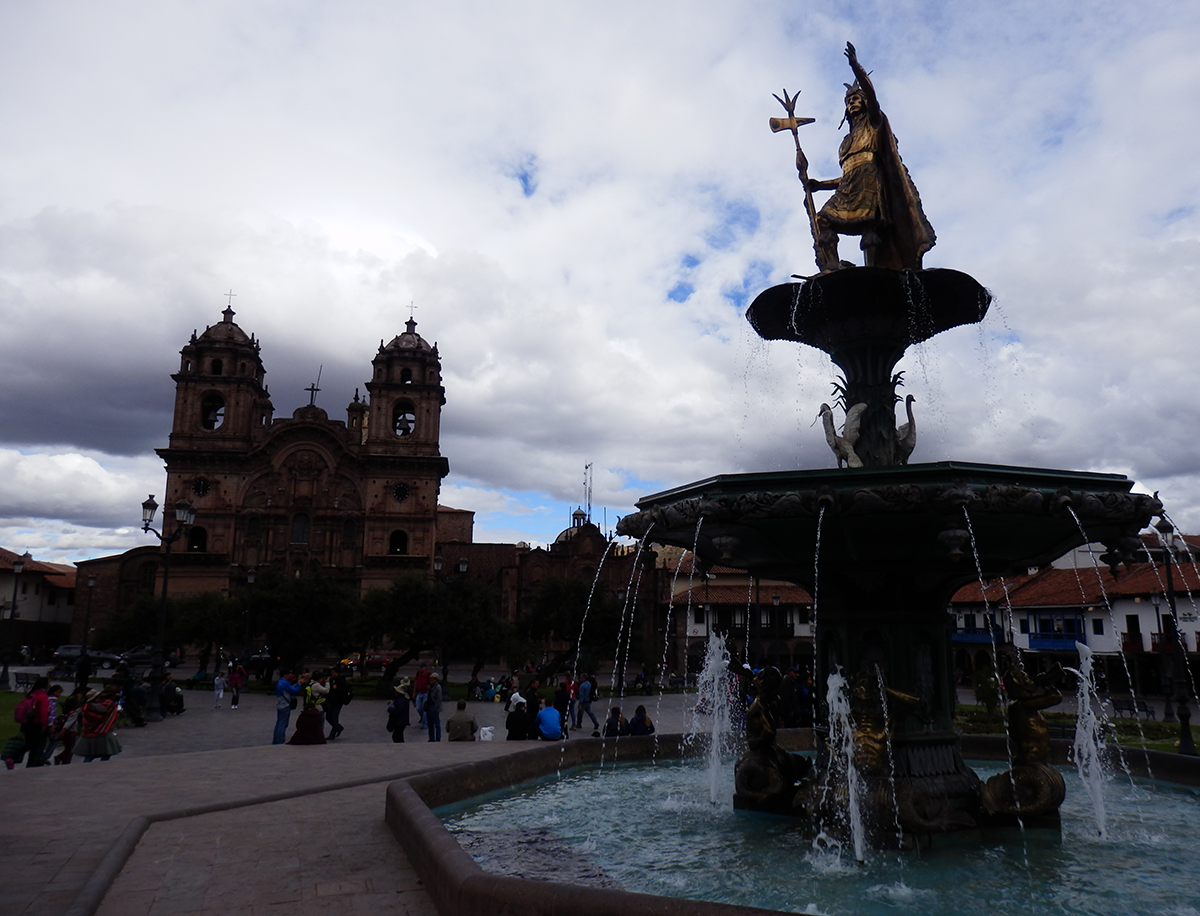
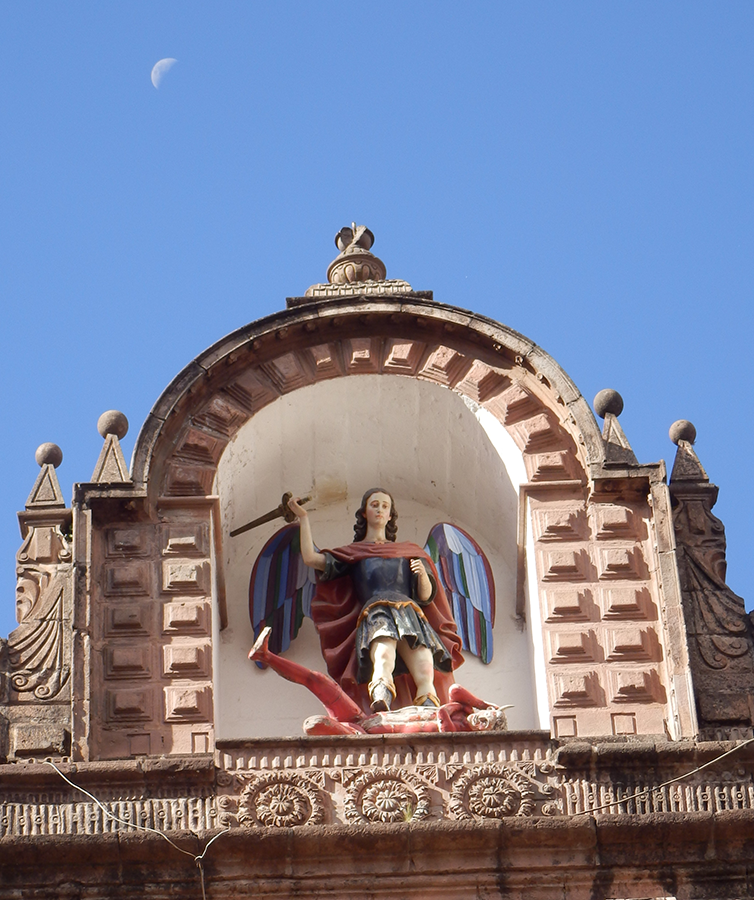
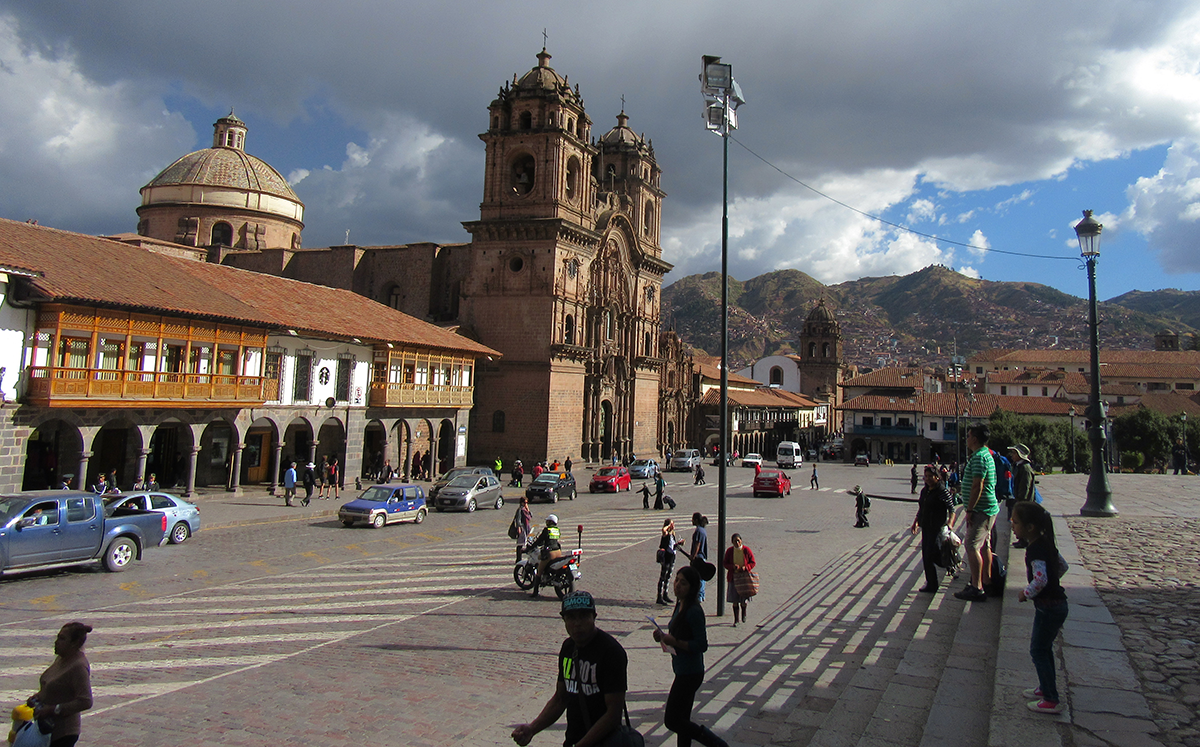
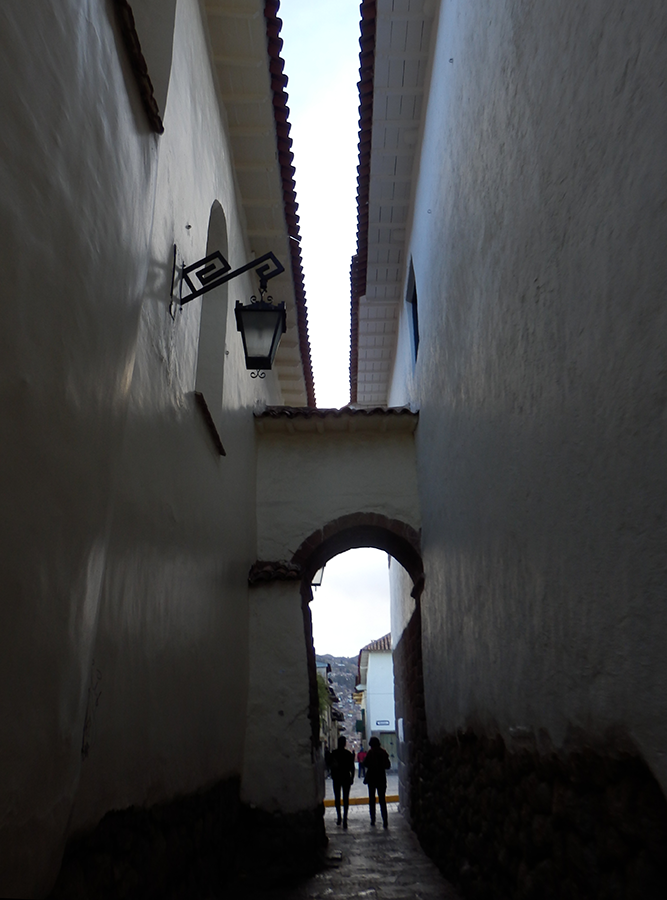
We stayed in San Blas, a charming neighborhood that once housed the former Incan nobles after the Spanish took over. Lovely shops featuring interesting art, clothing, jewelry and more now occupy the former mansions, intermingled with restaurants and cafes.
We took a tour of the Cathedral which included a detailed audio guide explaining some of the art, a combination of classical European styles mixed with faces and symbols the locals could relate to. Unfortunately, they don’t allow photographs, so not only can I not show you, I can only barely recall the details myself a month later. Just up the hill, Museo Inka keeps the same policy. I remember both as being worth the price of admission, but I don’t like these policies. They don’t encourage others to visit – and may have the opposite effect.
We had dinner at The Curry House Korma Sutra, a Peruvian-Indian fusion place near our hotel. I opted for the tandoori Guinea pig. We’d seen the little beasts served on a spit at various places but they are not exactly pleasant to look at in that form, roasted with their heads still attached. This place, however, served it chopped up into halves, much like a quarter of chicken. It wasn’t the best cooking method for getting a good idea of what the animal actually tastes like. Picking the thin flesh off the bones was a bit of a challenge, resulting in small, somewhat greasy but sweet bites that reminded me of dark turkey meat.
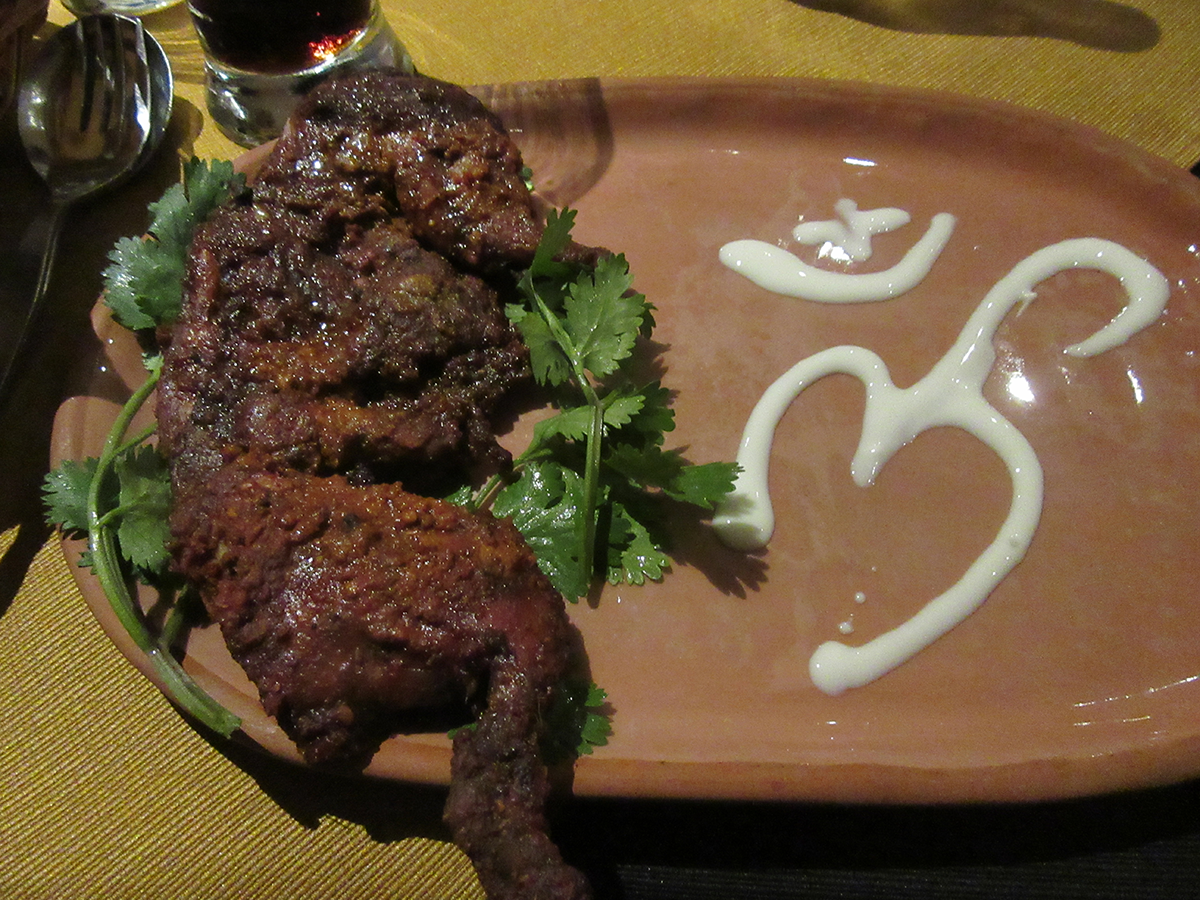
The highlight of the meal was a pair of alpaca steaks – tender, pink, sweet, in a delicious chili sauce. Phenomenal. Just thinking about this dish is making me hungry. It was so good we considered returning to the restaurant the following night.
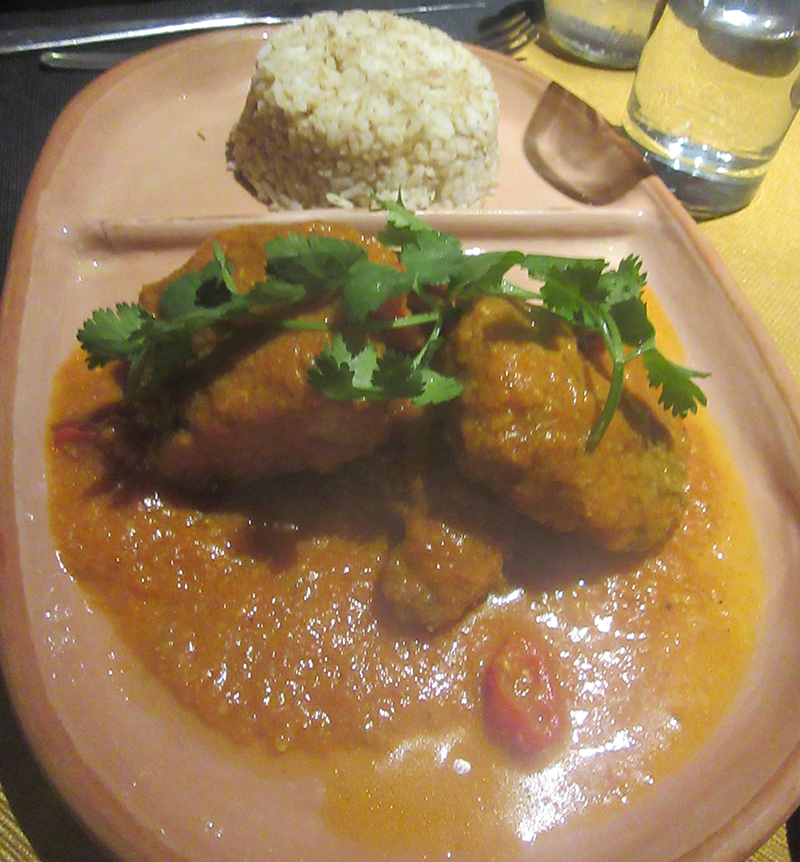
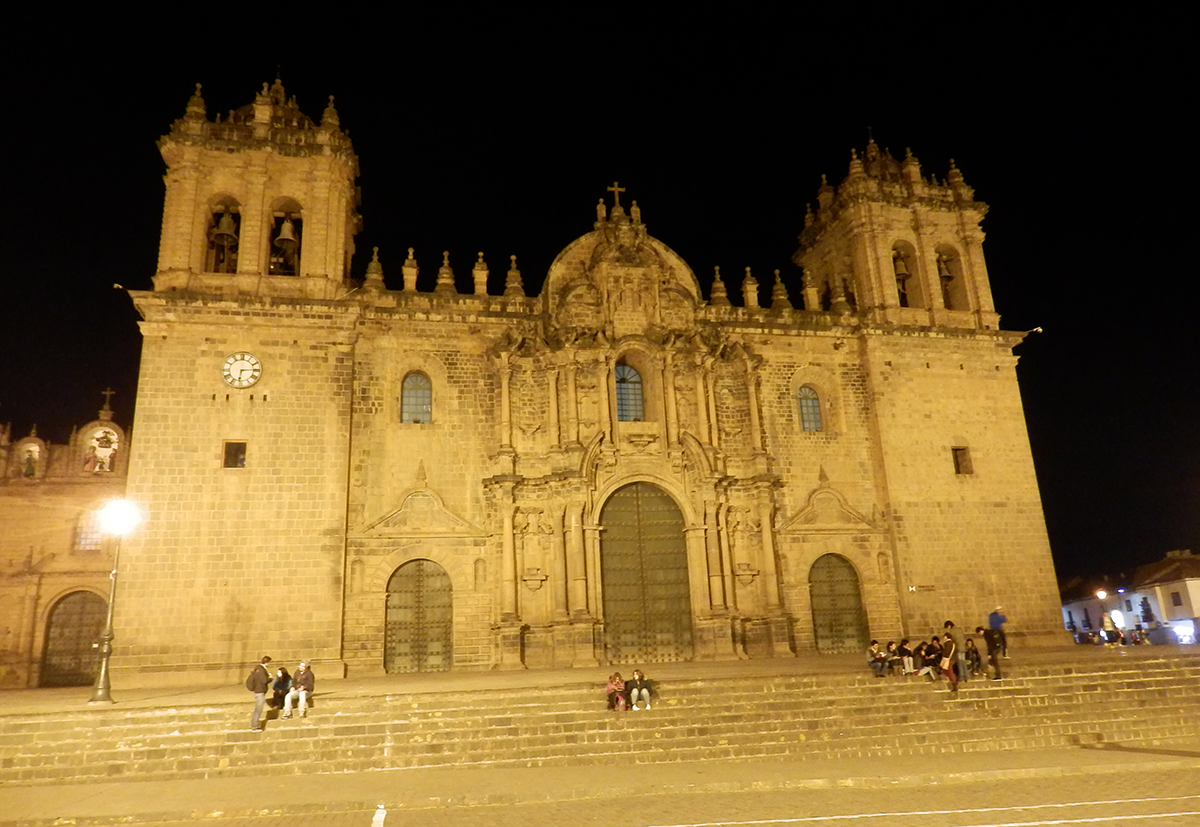
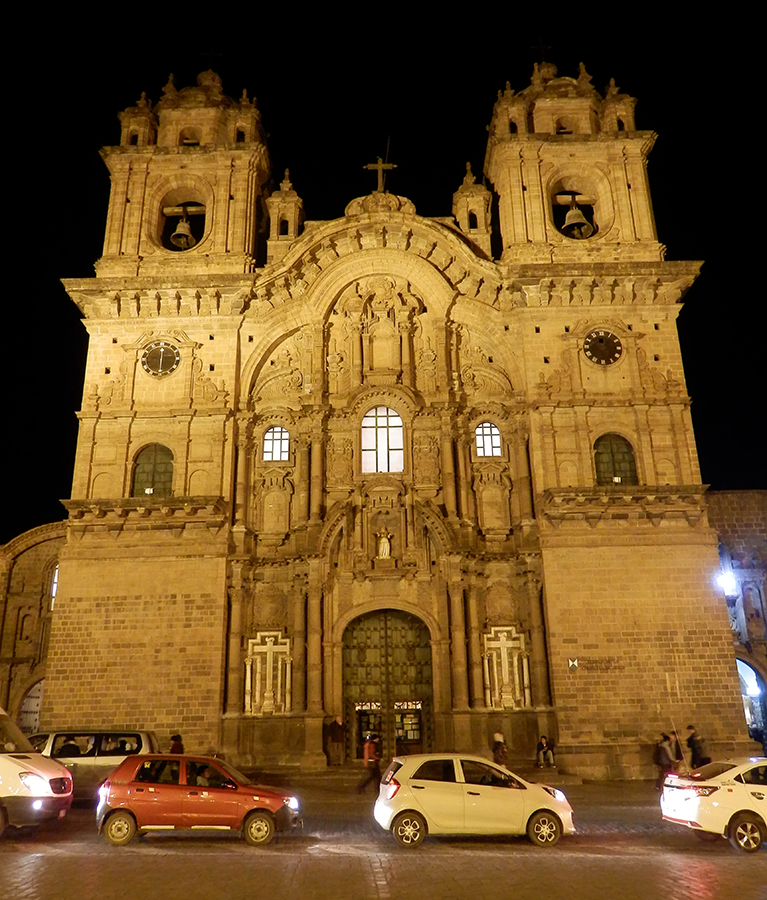
Traffic can be a bit sluggish in Cusco, day or night. The streets in the city center weren’t designed with cars in mind, so you’re often better off on foot. From the back of a car, you would miss all the details that make a town like this worth visiting in the first place. Some buildings still feature Incan walls. Vendors spread their hand-made wares along sidewalks, musicians perform on corners, and there are interesting shops tucked into little alleys.
In the morning, the town square hosted an hours-long parade with various schools from the district competing in some sort of marching competition. Though it was a lot of pomp, we didn’t entirely understand the circumstance. Something to do with police cadets?
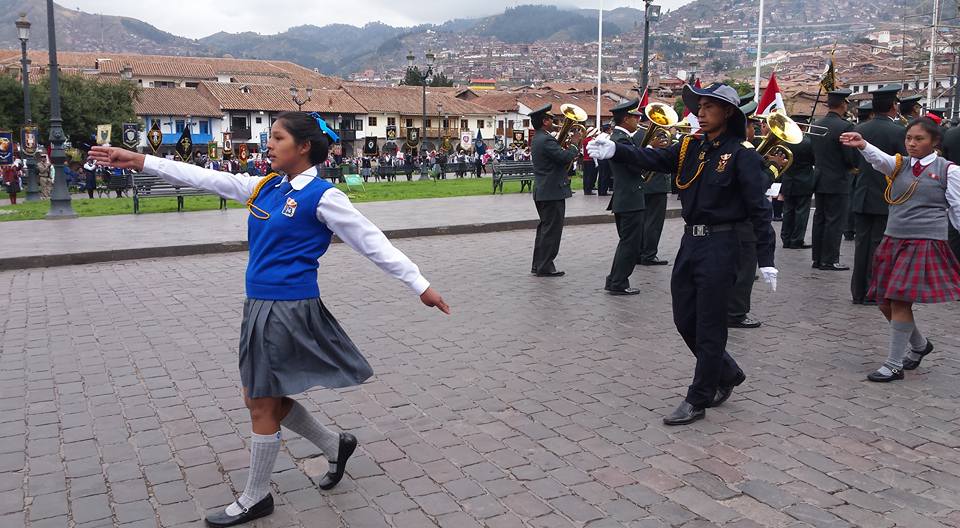
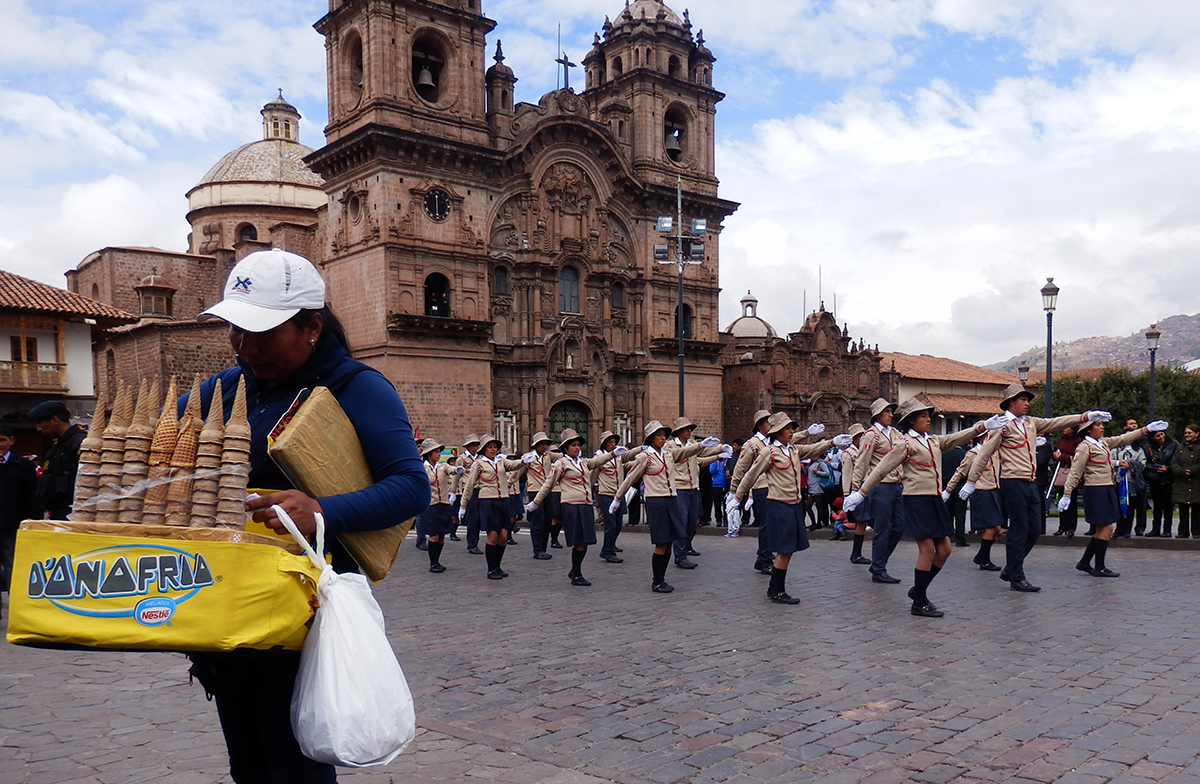
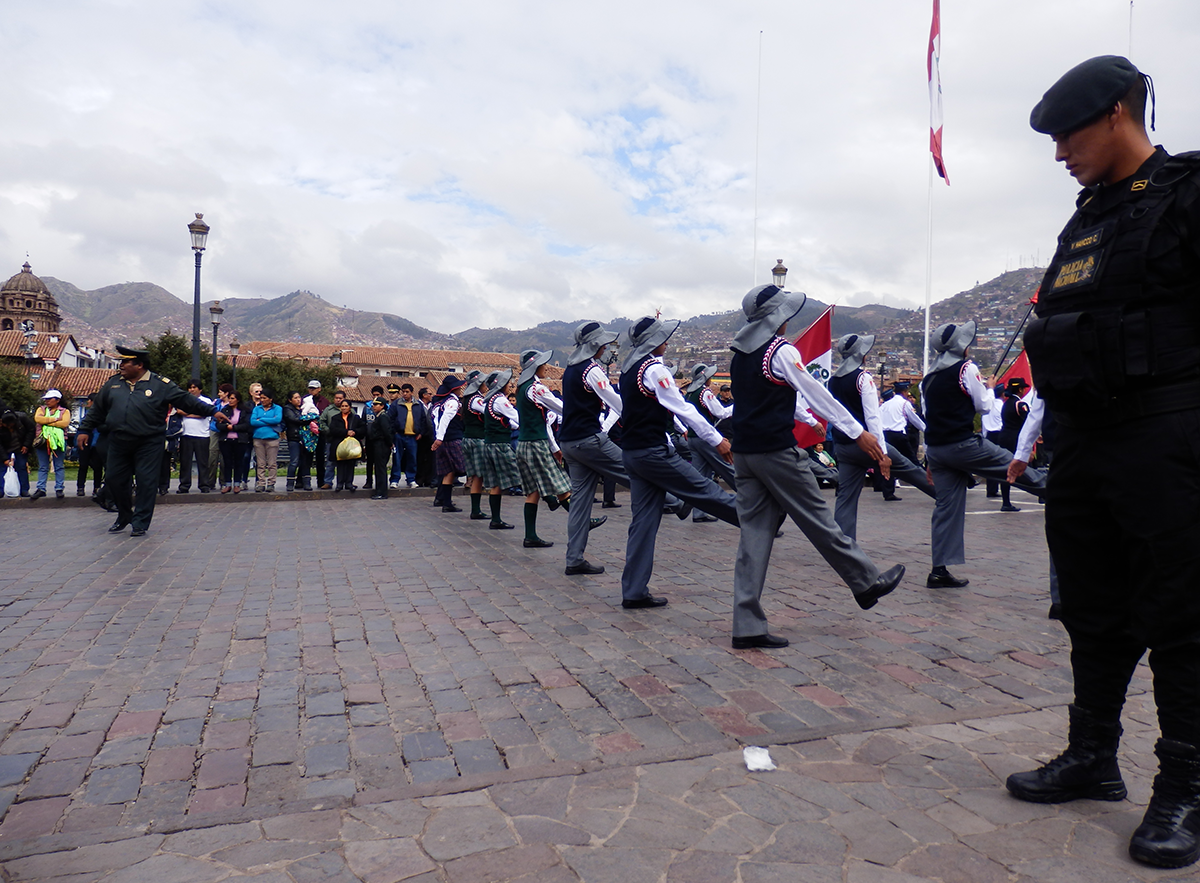
Up the block, a group of musicians and actors performed music and sketches, as equally confusing for us non-Spanish speakers as the parade in the square. I wish this lady sang as well as she wore that hat.
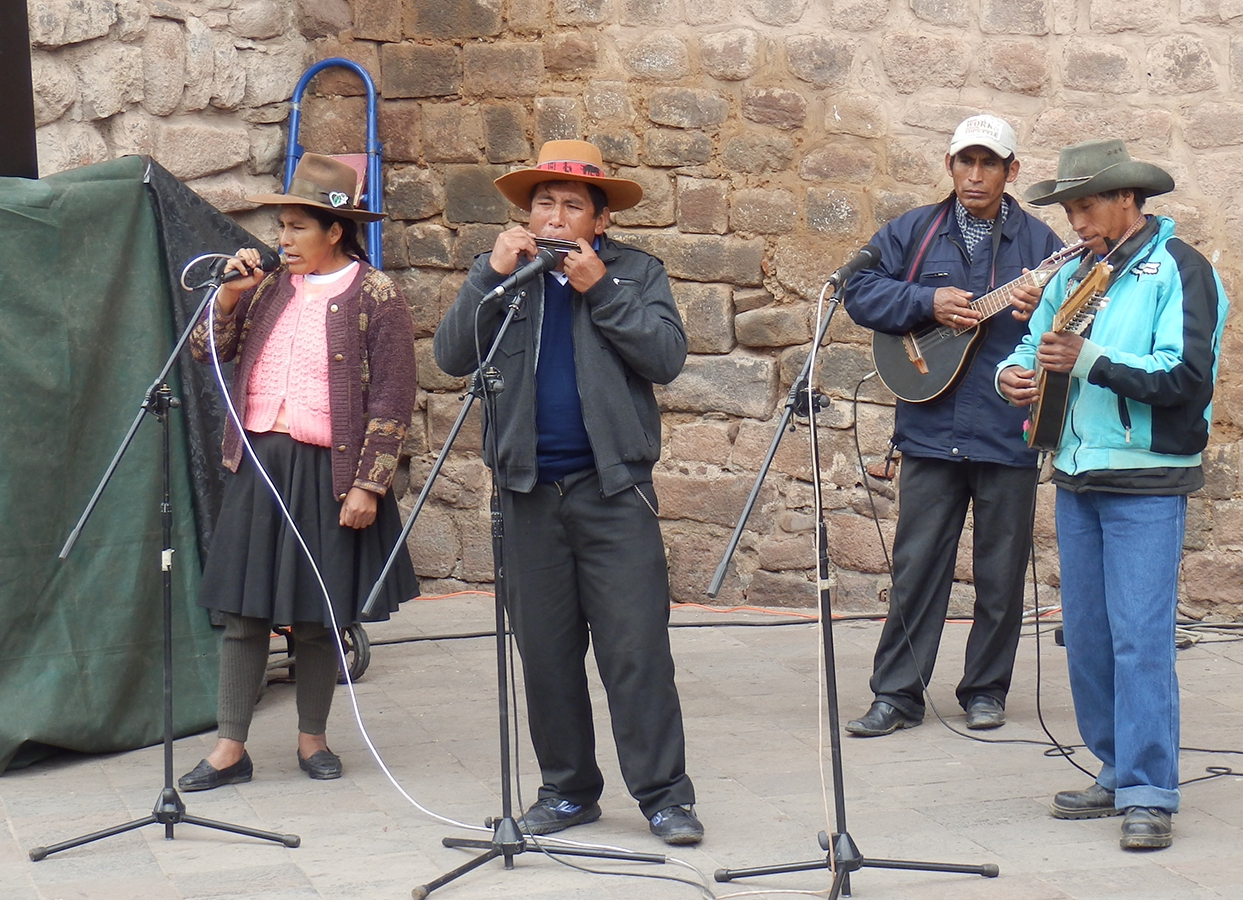
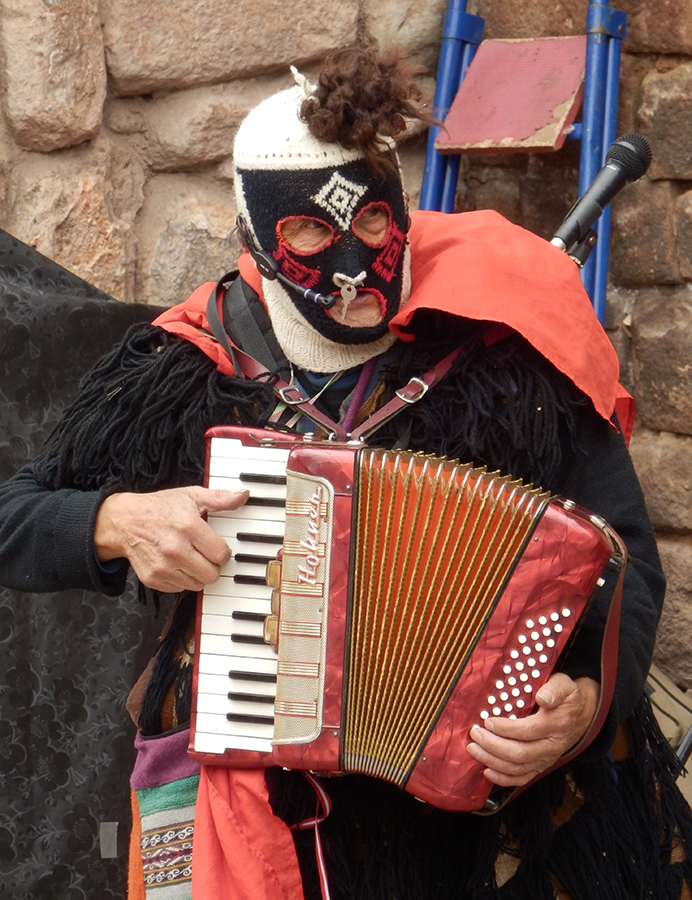
In addition to the droning, screechy style of the singer, the significance of the key dangling from this character’s nose was lost on me.
Only a few blocks from the town square is the San Pedro Market, a sprawling warehouse lined with booths. You can find the same scarves and sweaters you’ll see elsewhere, perhaps at lower prices, in addition to other, more hand-made clothing. There is also an amazing grocery department and food court servicing the local folks.
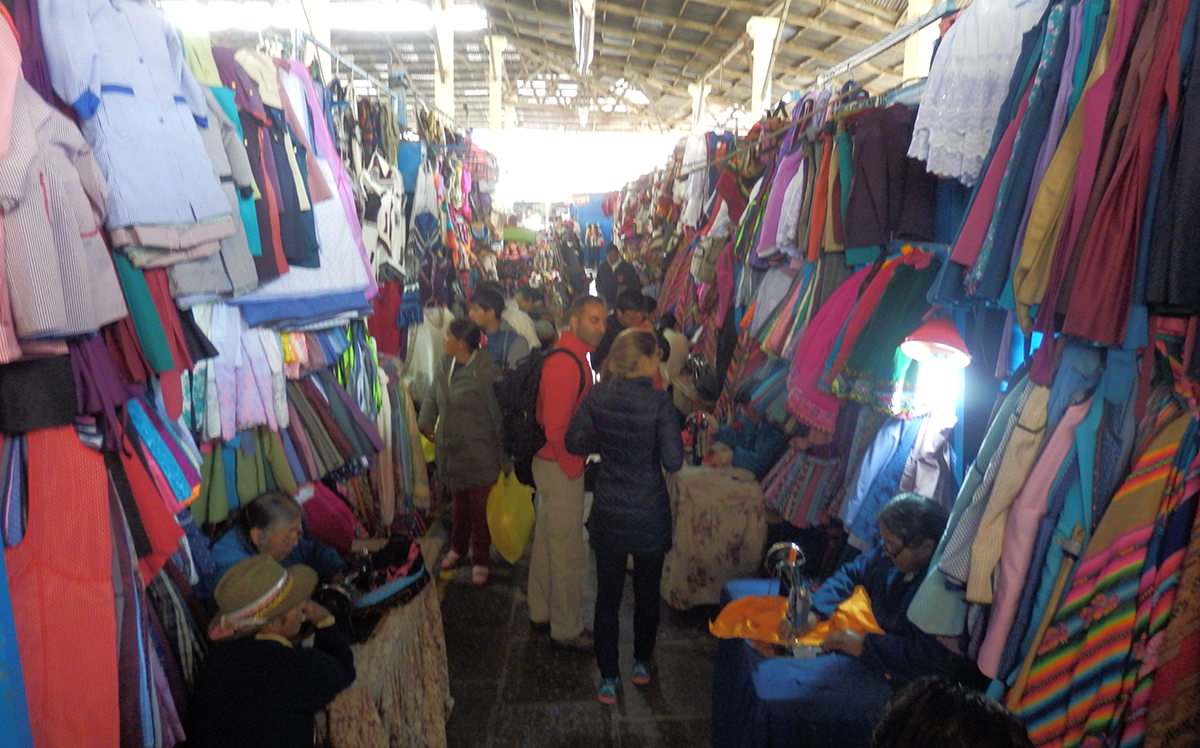
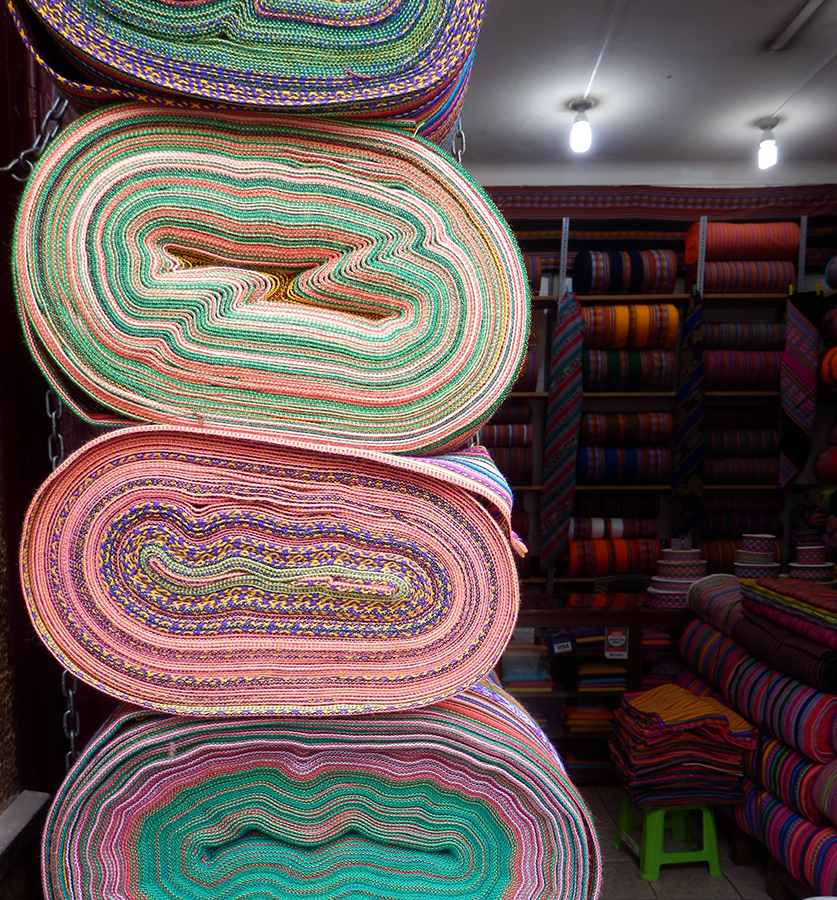
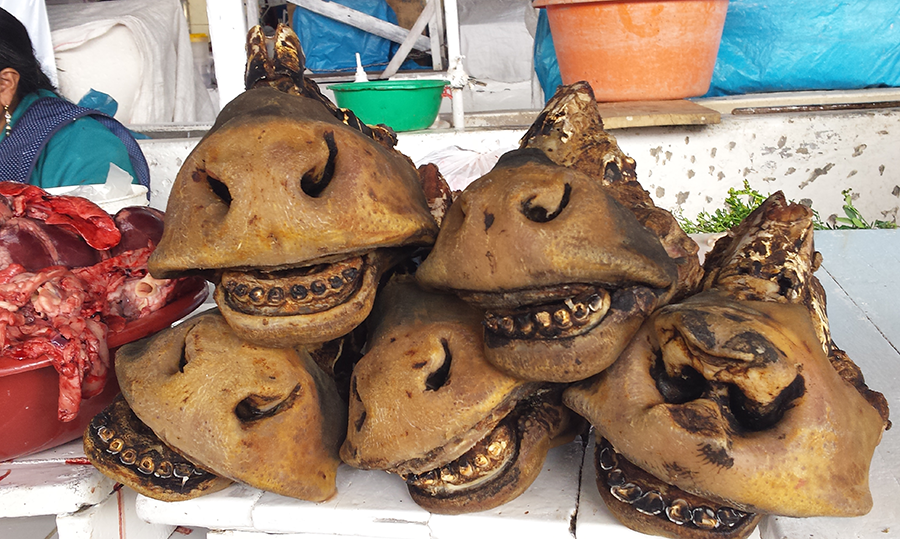
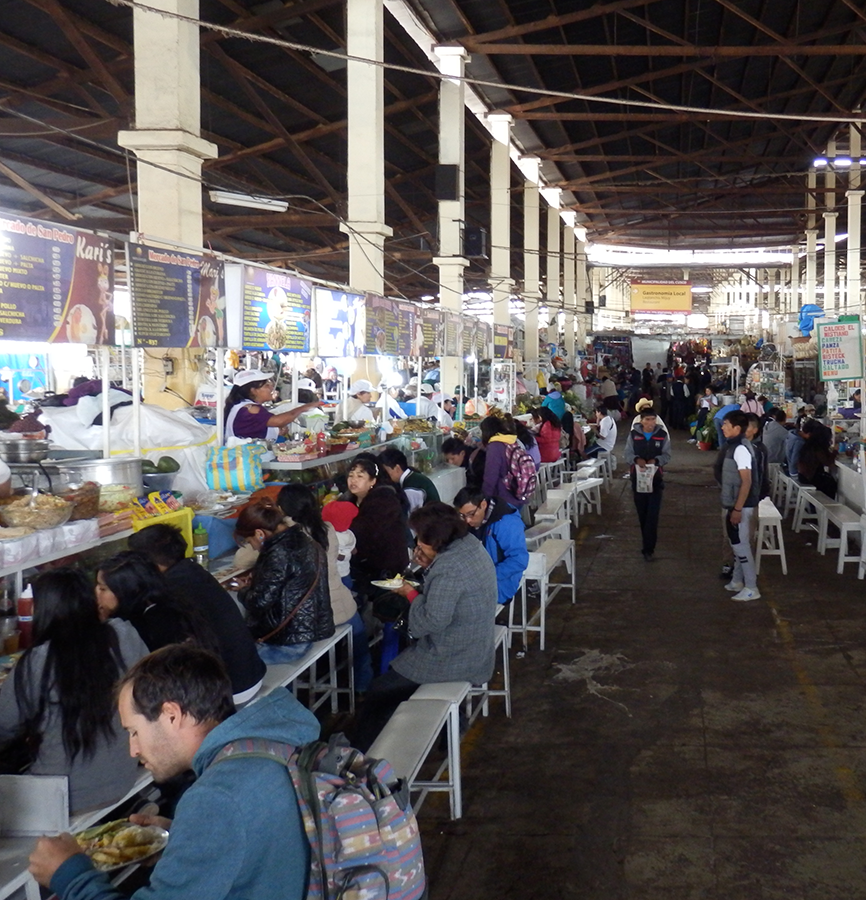
Back at the square, the hours of school uniforms and military precision gave way to a riot of colors in the traditional garb of a group of dancers.
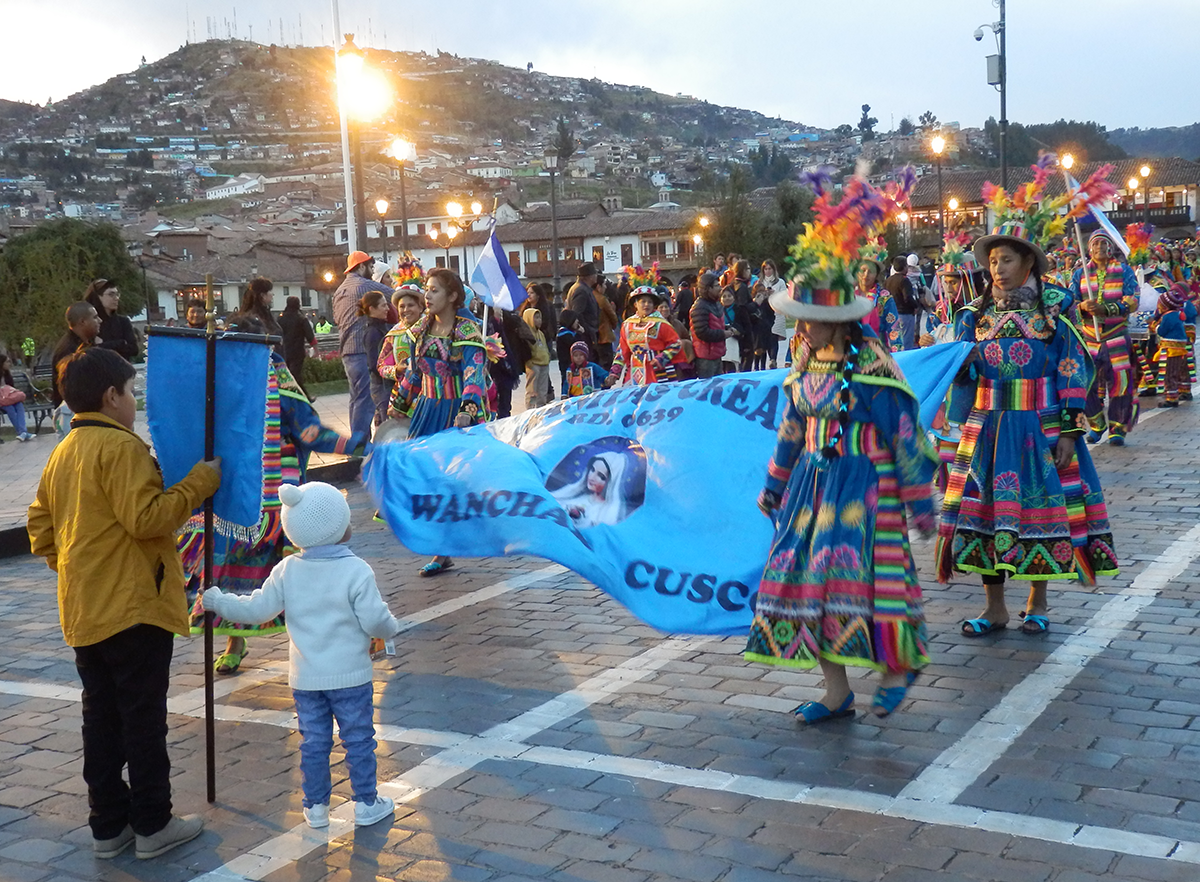
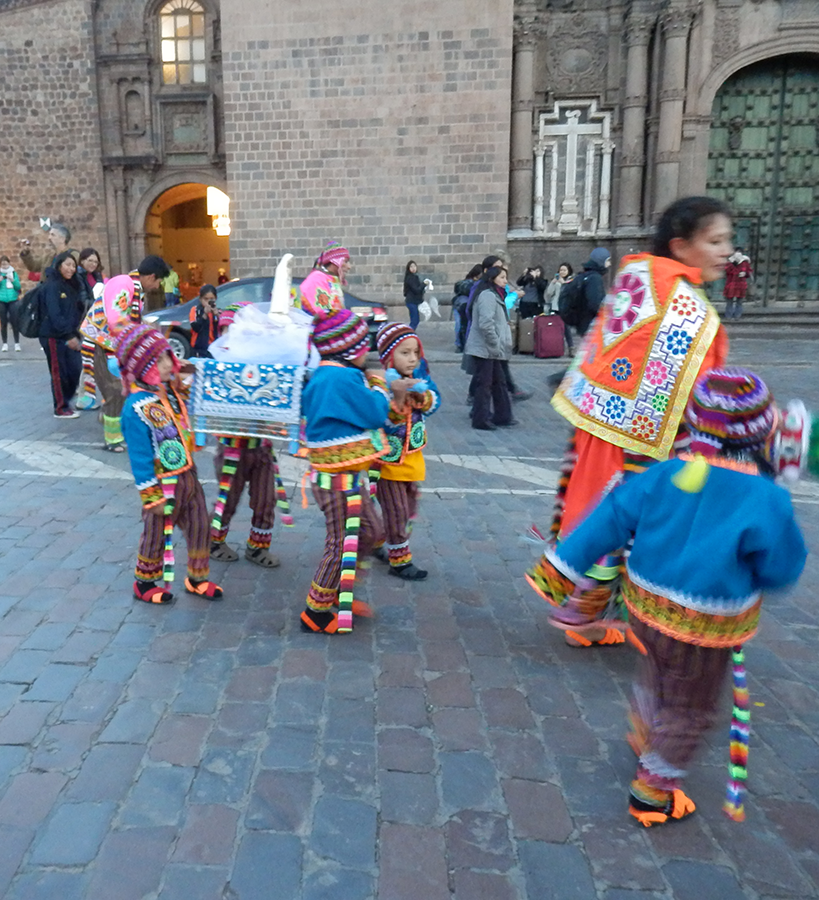
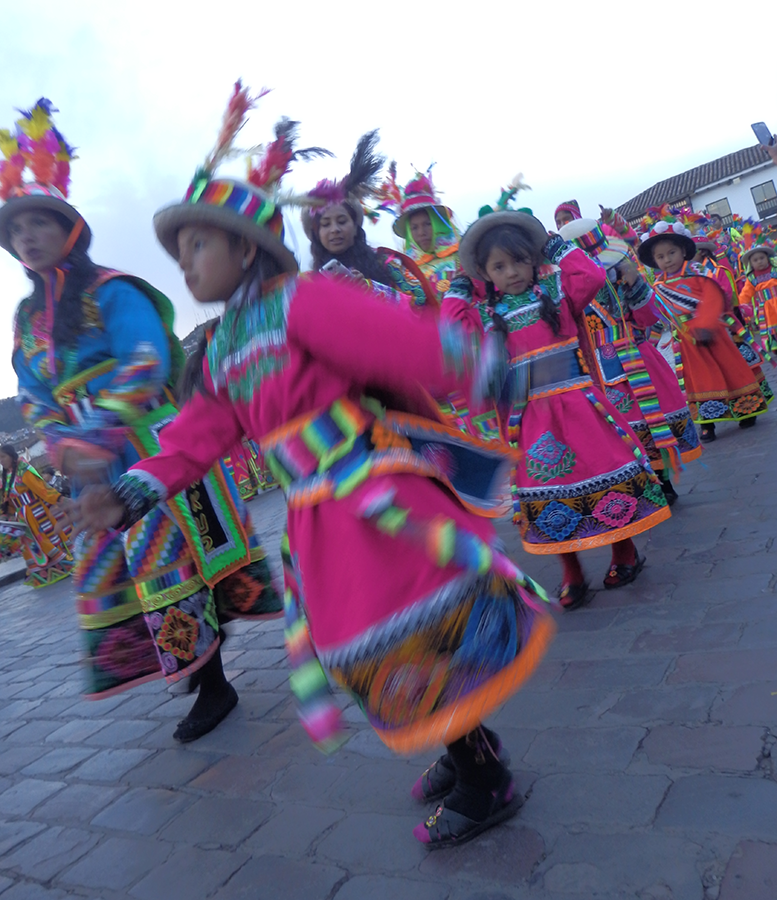
Cusco gets chilly in the evenings, thanks to the altitude, so the temptation of those sweaters, scarves and hats we’d been eying all day became too much to bear when I spotted one with huge, absurd horns. The hat came with big, goofy goat ears as well but I asked the knitter if she had one without them. Instead, she deftly removed the ears from the one I liked best and we spent the rest of the evening with locals and tourists alike pointing and giggling at me. We found a cute pub that featured a ton of Peruvian beers and spent our last evening ignoring the reruns of Russian soccer matches from 2001 projected above the bar for unknown reasons and passing the hat around for photo opportunities.
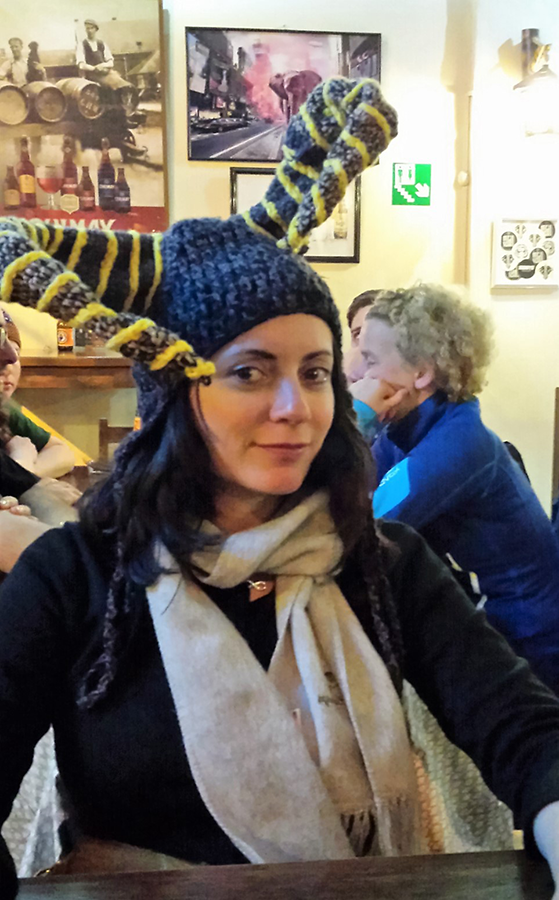
In the morning, we returned to Lima, detailed in a previous review. Though the capital has lots to offer, the simpler charms of Cusco definitely won us over.
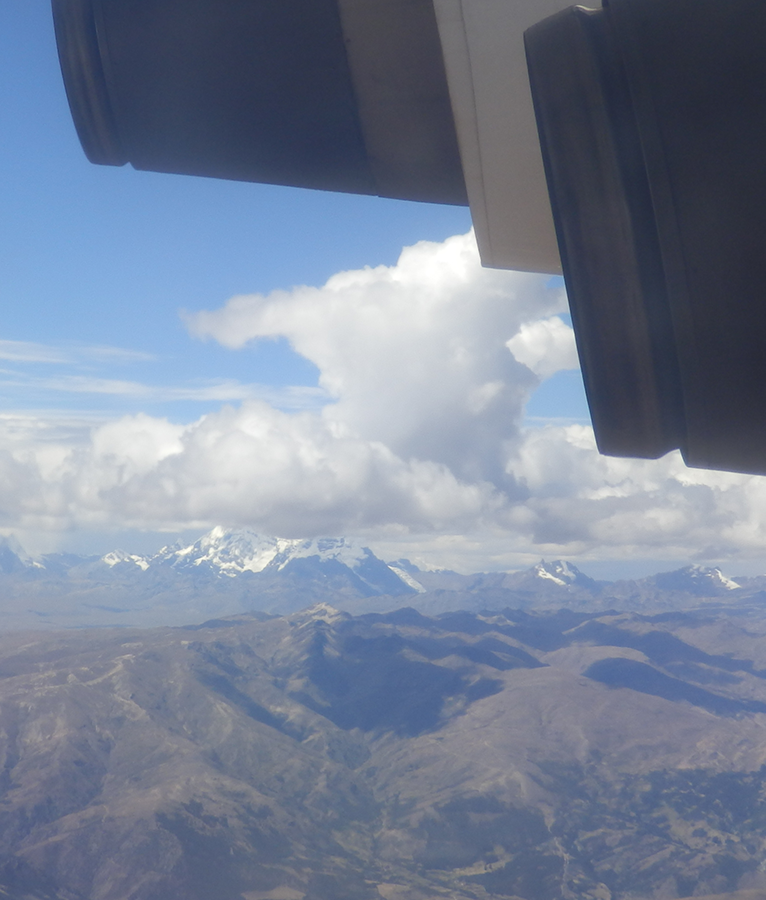
Peru itself wasn’t on my bucket list, but now that I’ve been I can say it should be on yours. Good food, pretty architecture, impressive ruins, fantastic museums, a vibrant populace, and, practically everywhere you look, epic grandeur, epic grandeur.